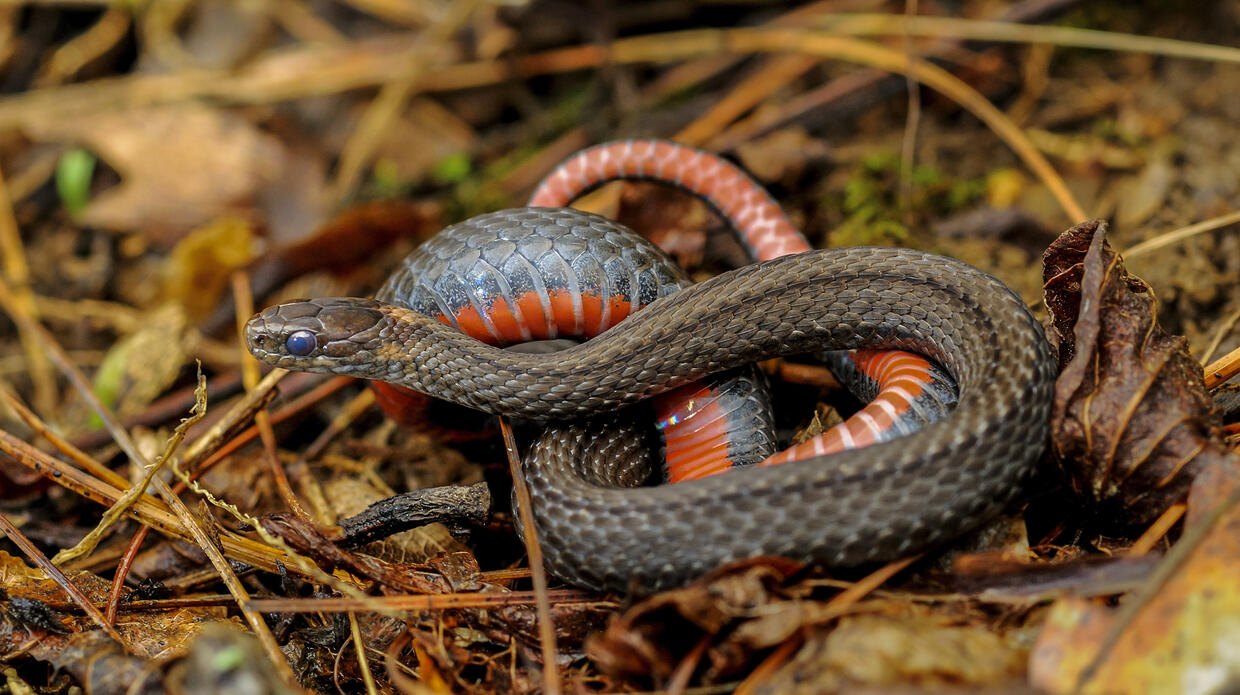Fast facts
Common name(s): Red-bellied snake
Scientific name: Storeria occipitomaculata
Range in MA: Statewide except Nantucket County
Conservation status: Not listed
Fun fact: Although they all have red bellies, these snakes can vary tremendously in coloring on their backs, from reddish brown to tan to nearly black
Similar species: DeKay's brown snake
Identification tips: Look for a red belly and for three light spots on the neck just behind the head
Description
Red-bellied snakes are a nonvenomous, smaller species, with keeled scales and an unmistakable bright coral red or orange belly. Their backs can be reddish brown, slate gray, or black in color. Three light spots often appear on their necks just behind the head. Their backs may display a broad center stripe slightly lighter than the body, and/or four thin, dark stripes. Bellies also usually display a thin black border. Some have yellow bellies, or black bellies, with a red stripe down the center of their backs, or with neck spots fused into a solid ring, but these variations are rare in Massachusetts. Adults range from 8–12+ inches in length.
Habitat
Locally abundant statewide, except in Nantucket County, red-bellied snakes are diurnal (active during the day) in spring and fall and nocturnal in summer. Usually a woodland species, and frequently associated with rocky, wooded, mountainous, or hilly terrain, these snakes can also live under rocks, boards, and logs in damp areas along powerline cuts, pastures, wetland borders, and fields. Red-bellied snakes may be our most mysterious small snakes in terms of habitat. They can be abundant at one site yet entirely absent from similar sites nearby.
Life history
Mating can take place any time from spring to fall. Young are typically born from late July to early September. At about 3 inches long, babies are small enough to coil comfortably on a quarter. Red-bellied snake diets consist mainly of slugs. They also eat worms, sow bugs, soft-bodied insects, and small frogs. When threatened, they can curl their lip to display their small teeth.
